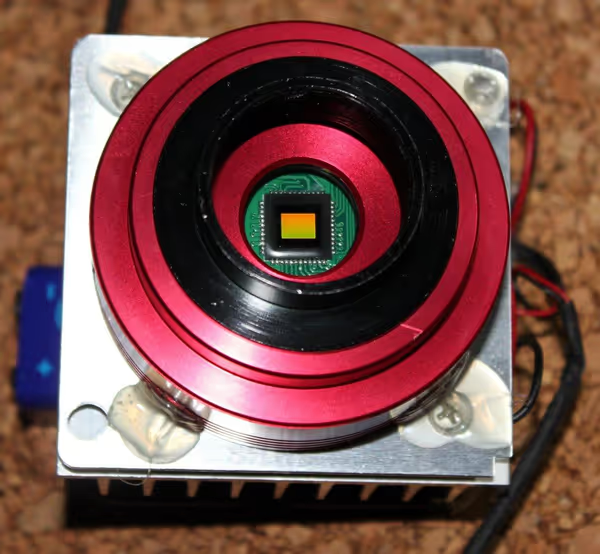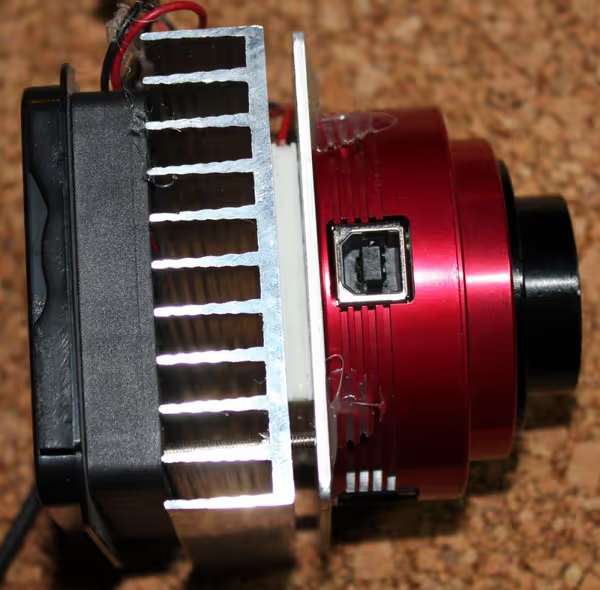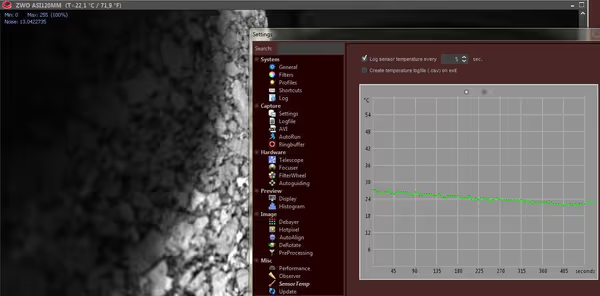Simple and non-invasive cooling of ASI120M camera
Some time ago I was writing about using USB powered Peltier modules to cool simple cameras like guiders or planetary cameras. Few days ago I've mounted such devices to my ASI120MM and got sensor temperature lower by around 10-15 degrees.
The USB coolers have a Peltier device that from one side has an aluminium plate (cold side) and aluminium radiator with a fan on the hot side. My unit was quite lightweight and that allowed quite easy non-invasive connection with ASI120MM cameras. As USB2 provides only 2.5W of energy it won't be able to pump a lot of heat, but still cold side gets noticeably colder than the ambient temperature.
ASI120M camera has an aluminium case which is much more efficient at dissipating camera heat than plastic cases. It also doesn't have any connectors on the back so the Peltier module can be easily connected there. Sadly it has no cold finger running to the sensor back and that limits cooling efficiency as the air inside camera must be cooled also.


On the camera back I applied some ceramic thermal paste and then I've attached camera to the cold side of the cooling unit twisting it back and forth to make that thermal paste go really thin on the whole surface. Then I used plastic
glue to make the connection permanent. I applied a bit of glue in four points. As the cooling unit is lightweight the glue can hold it easily. This plastic glue can be easily removed as well as the thermal paste - leaving camera in vanilla unaltered state.
First test show that the temperature drop is around 10-15 degrees between cooled and uncooled. The night was rather chilly (around 10C) and the camera was reporting 14C. I have no dark frame comparisons but Uranus frames taken at 50-200 ms exposures at nearly max gain were quite clear. Methane band imaging done at similar settings some time ago at higher temperatures had more noise as well as some vertical bands visible sometimes on stacks as nasty artefacts.

Comment article